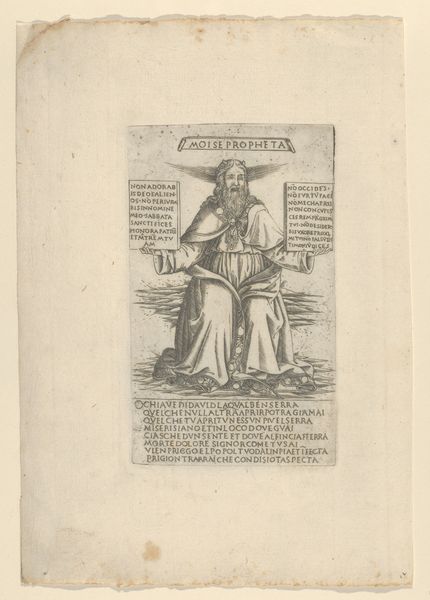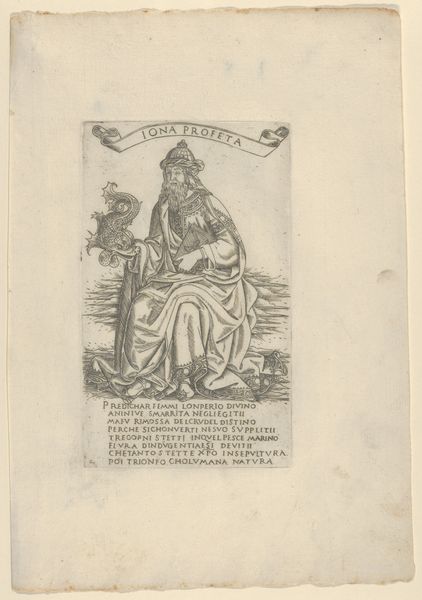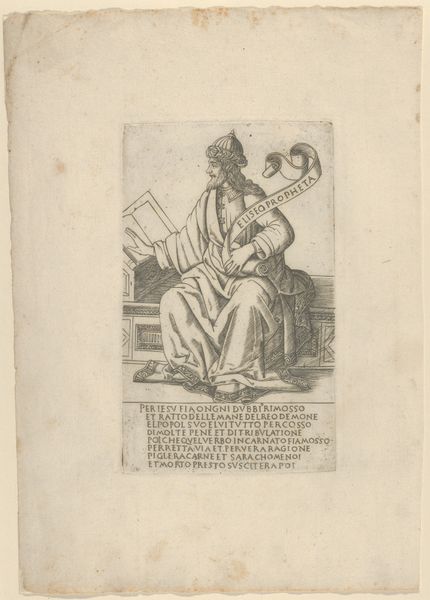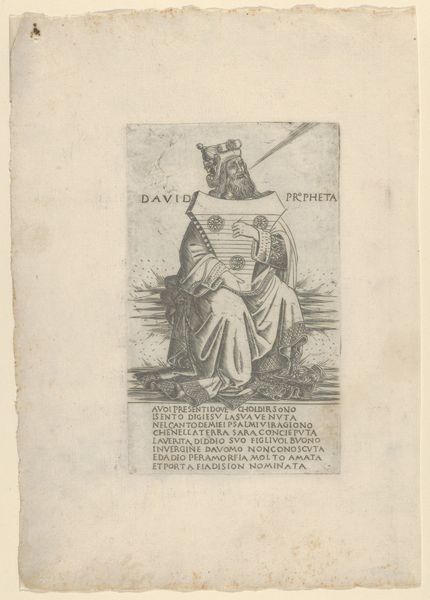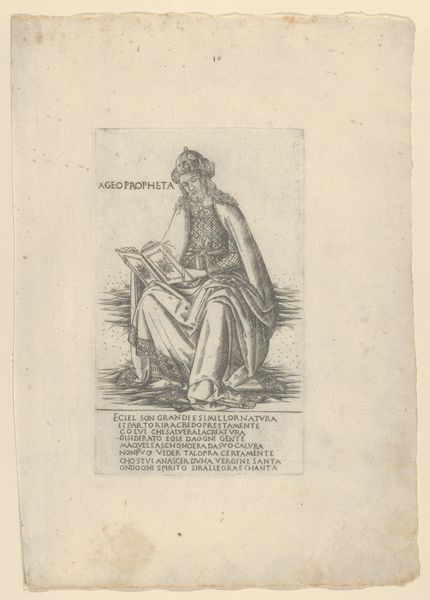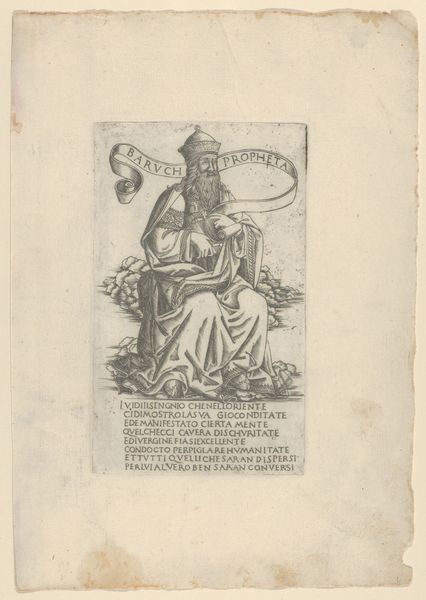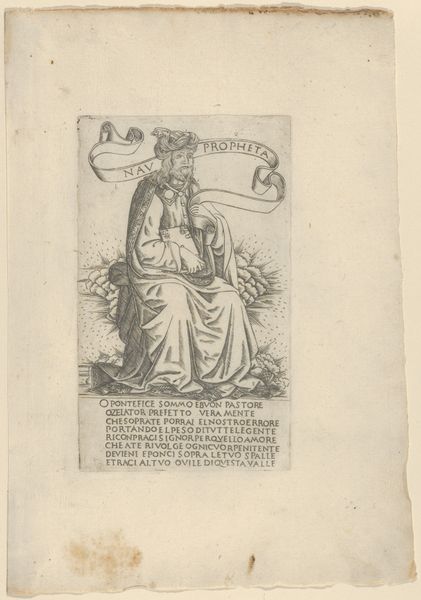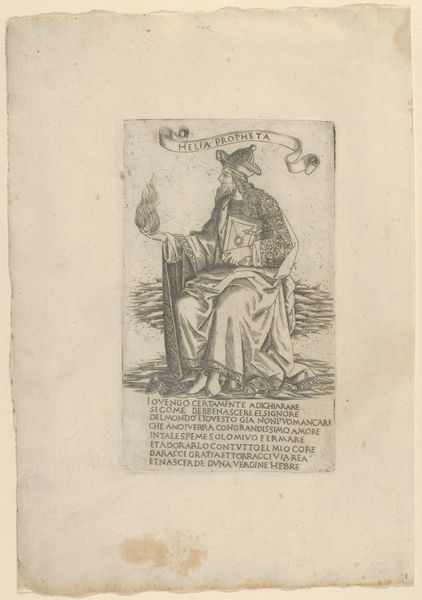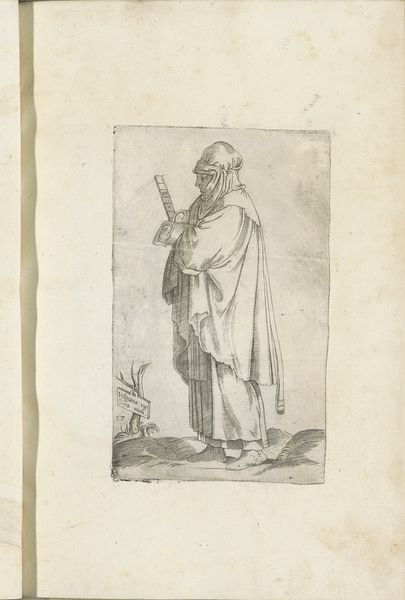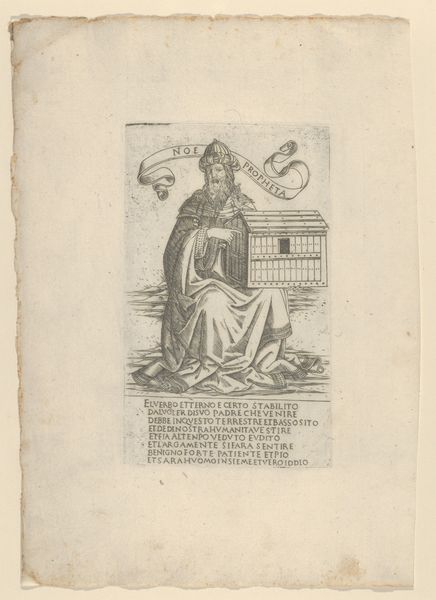
The Prophet Samuel, from Prophets and Sibyls 1480 - 1490
0:00
0:00
drawing, print, engraving
#
portrait
#
drawing
# print
#
history-painting
#
italian-renaissance
#
engraving
Dimensions: Sheet: 11 1/2 × 7 15/16 in. (29.2 × 20.2 cm) Plate: 6 15/16 × 4 3/16 in. (17.7 × 10.7 cm)
Copyright: Public Domain
Curator: I’m immediately struck by the contrast of stark lines and gentle curves, lending an overall pensive mood to "The Prophet Samuel, from Prophets and Sibyls." It is attributed to Francesco Rosselli and was completed between 1480 and 1490. Editor: Agreed, that dichotomy is definitely present! I think locating the work within the tumultuous political landscape of Renaissance Italy gives added context to the thoughtful air that you noted. Figures like Samuel were seen as powerful voices against corruption. Rosselli presents us with a leader in deep contemplation, navigating the complexities of religious authority and governance in a society undergoing rapid transformation. Curator: Focusing on form, observe the deliberate composition: Samuel's seated pose on the throne leads our eyes towards the book, and the careful engraving lends an almost sculptural quality to his robes. Note also how Rosselli employs linear perspective to give spatial depth to this otherwise flat surface. The banners and inscriptions function, formally, as spatial markers in the visual plane. Editor: Beyond just "spatial markers," these elements are dripping with meaning. Inscriptions during this period provided commentary but also framed figures within a didactic structure of moral leadership. The visual weight placed on language indicates its perceived power and connection to authority, in a world governed by powerful religious narratives. Furthermore, the positioning of Samuel within a broader "Prophets and Sibyls" series speaks volumes about Renaissance efforts to weave together classical and Christian traditions, with all the inherent philosophical questions. Curator: Absolutely. Rosselli's adept use of line is undeniable. It would be fruitful to look more closely at this work within a wider body of Italian Renaissance prints... it's formal dialogue with contemporaneous engraving pushes it above and beyond its representational intentions. Editor: Examining it with this contextual understanding of Renaissance power struggles makes Rosselli’s engraving not just a portrait, but an important cultural artifact reflecting a society in transition. The tensions between tradition and reform come vividly alive, still resonating today as communities consider how their past informs our present challenges.
Comments
No comments
Be the first to comment and join the conversation on the ultimate creative platform.
